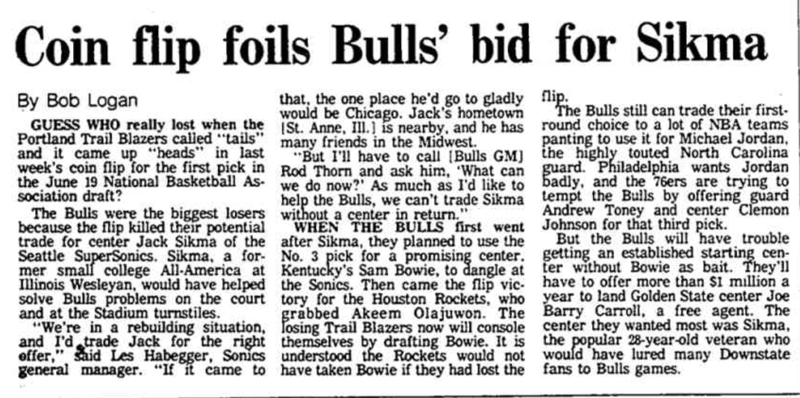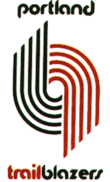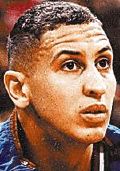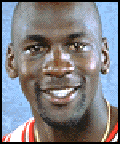![]()
Misconception
Drafting Sam Bowie over Michael Jordan was the single most colossal blunder in the history of basketball. How could the Trailblazers even think to not choose his Airness ? And for what, a guy who couldn't even get on the court without breaking his leg.
![]()
The Facts
In the 1984 draft, the Portland Trailblazers drafted Sam Bowie, a 7'1 center/power forward from Kentucky with the second overall pick. The first pick was center Hakeem Olajuwon [then known as Akeem]. The third pick was Michael Jordan, a 6'6 swing player from North Carolina. While Olajuwon has gone on to have a Hall of Fame career and Michael Jordan is considered by many as the greatest player of all-time, Bowie led a long but unremarkable career, coming back from a string of career-threatening leg injuries. For most of Bowie's career, when healthy, he was a good rebounder and passer, demonstrating excellent touch for a man his size. His dedication to rehabilitate and play despite the option of quitting the sport while keeping his contract was inspiring. However his basketball presence was mostly a shell of his former playing self.
![]()
Rebuttal
 |
Even the Bulls did not know what they had and were considering trading the pick for a center such as Jack Sikma or Tree Rollins.
[Note that Rod Thorn in recent retrospective interviews has suggested that he wasn't enamored with Bowie, and that may well have been true, as evidenced by the suggestion that the Bulls would likely have traded him. But that doesn't mean he was fully satisfied with Jordan either, given his desire to find a center.]
 |
In the above scenario [where the Trailblazers got 1st dibs and picked Olajuwon, while the Rockets (who already had a promising center in Ralph Sampson) could look elsewhere], the Bulls would have been willing and able to trade their #3 pick Bowie in order to secure their primary need, which still was a center.
As it turned out with Jordan or another player with a third pick, the Bulls found it very difficult to command a top center in return from other NBA teams. But that didn't stop them from continuing to try to secure a center, either via trade or freee agency:
From the article (titled "Draft is no Puzzle to Bulls" published in the Chicago Tribune on June 17, 1984 days prior to the draft):
.....
"Frustrated in their bid to land center Jack Sikma from Seattle, the Bulls again went after ex-De Paul star Terry Cummings last week. A proposed three-way trade involving Cummings' Los Angeles Clippers, the Dallas Mavericks and the Bulls reportedly fell through."
....
"That left only two established starting centers available: Tree Rollins of the Atlanta Hawks and Joe Barry Carroll, a free agent anxious to leave the Golden State Warriors. Carroll's agent, Howard Shusher, is demanding a long-term contract at $2 million a year. 'Atlanta is willing to trade Rollins to us but the asking price is prohibitive,' Thorn said. 'We might consider giving Carroll an offer sheet.'"
On the eve of the draft Bulls coach Kevin Loughery and General Manager Rod Thorn both confirmed that getting a center was the Bulls' number one priority. From the article "Bulls say no to Cummings deal; they'll draft Jordan" Chicago Tribune June 19, 1984):
(Rod) Thorn spent Monday night phone-sitting in the Bull's office with vice president Jonathan Kovler, Loughery and his assistants - Thibault, Fred Carter and Bill Blair. They turned down last-minute nibbles for Jordan while reviewing the next step in the rebuiding process.
"Two steps," Thorn said of the priority list. "Getting a center and the David Greenwood situation. One will affect the other."
 |
The Blazers' Mychal Thompson was a good, active inside player but he did not have the necessary bulk to play center. It was thought Thompson would do better at the power forward position if they could add a force at center. One major strength of the team was in their shooting guards. They had an all-star in Jim Paxson along with a great athlete and budding superstar in Clyde Drexler. To top that off, they had just acquired high scoring Kiki Vandeweghe as their small forward (after trading center Wayne Cooper among others).
Simply put, Portland was stocked at the shooting guard position and had plenty of scorers. Their need was a defensive presence who could dominate the lane and rebound.
![]()
So after Olajuwon was taken, the Blazers had a choice.
 Bowie was a 7'1 center who could rebound and block shots. He had an excellent outside shot (three-point range), ran the floor well for a big man, and had an excellent team attitude. Perhaps his most remarkable skill was his passing which was unmatched at the time for a man at his position. The only question mark was Bowie's leg which had been broken during his career at Kentucky and took a considerable amount of time to rehabilitate. But after he returned for his senior season, it appeared Bowie's leg had healed and in fact, was stronger than ever.
Bowie was a 7'1 center who could rebound and block shots. He had an excellent outside shot (three-point range), ran the floor well for a big man, and had an excellent team attitude. Perhaps his most remarkable skill was his passing which was unmatched at the time for a man at his position. The only question mark was Bowie's leg which had been broken during his career at Kentucky and took a considerable amount of time to rehabilitate. But after he returned for his senior season, it appeared Bowie's leg had healed and in fact, was stronger than ever.
 Jordan was an exciting wing player out of North Carolina who entered the draft after his junior season. He showed flashes of brilliance but his true skills were often hidden within Dean Smith's offensive schemes. He had great moves to the basket and had good size for his position. One question mark concerned his outside shooting ability.
Jordan was an exciting wing player out of North Carolina who entered the draft after his junior season. He showed flashes of brilliance but his true skills were often hidden within Dean Smith's offensive schemes. He had great moves to the basket and had good size for his position. One question mark concerned his outside shooting ability.
![]()
When it came down to choosing, the Blazers made what they thought to be the best decision for their team, Bowie. He filled their major hole and brought new dimensions to the team. Jordan was certainly a great talent but he was projected to compete with Paxson and Drexler for basically one spot. It just didn't make sense to pass over a center to add another shooting guard whose presence could potentially wreck team chemistry due to competition between Drexler and Jordan, and still not address Portland's major concerns.
Many claim they would have chosen Jordan, and maybe they would have but for a team with the needs the Trailblazers had, I don't think that choice made sense. These people will point out that the Piston's success in the late 80's and the Bull's success in the 90's is proof that guards and wing players can lead to championship teams. The fact they omit is that at the time of the draft in 84, there was absolutely no precedence over the entire course of NBA modern history to suggest that this was possible. All the evidence suggested that in order to have a contender, the team needed a dominating big man, whether you looked to Wilt Chamberlain and Bill Russell in the 50's and 60's, Willis Reed, Kareem Abdul-Jabbar, Bill Walton, Moses Malone etc. Even though Robert Parish's talents are often overlooked, the Celtics of the 80's had arguably the greatest front line in pro basketball history with Bird, McHale and Parish. Even one of the best teams of the early 80's, the Philadelphia 76ers, didn't win the championship until they brought Moses Malone on board. Again, to pass over a gifted center in order to take another guard would require a lot of explaining by the Blazers at that time.
Another claim by the critics is that Jordan demonstrated much more talent than Bowie during his collegiate career and they cite the performance in the 1984 Olympic games as evidence. Again, the problem is that the Olympic games were not held until after the NBA draft so this is irrelevant to the discussion. If anything, if you take into account the fact that Bowie's senior year was mainly spent on rehabilitation on a balanced team, Bowie's collegiate career looks as impressive as Jordan's. He was All-SEC and made the ill-fated 1980 Olympic team after his freshman year, and averaged 17 ppg., was All-SEC and was All-American his sophomore year before his injury was revealed. At the time, he was considered a more well-rounded prospect than Ralph Sampson who went on to dominate college basketball while Bowie was injured.
There are players every year in the shooting guard range who draw raves in college. But for every one of those that turns into a Michael Jordan, there's a hundred who turn into a Fennis Dembo. (Of course the same can be said about 7-footers, however there are a lot fewer 7-footers with skills available than there are shooting guards.) Those who claim they knew Jordan would be as great as he turned out, I have a hard time believing. Injuries and other factors have a way of altering careers in radical ways to be so confident with any assurances of greatness (ask Len Bias if you disagree).
Looking through some past drafts, here are some picks teams did or could have made based on picking a flashy guard with great collegiate careers.
Note: I don't claim that I would have drafted any better, only that these examples underscore how difficult it is to project from college which players will become great and which ones will be busts.
Should Utah have chosen Alfredrick Hughes over Karl Malone in 1985 ?
Was choosing Dennis Hopson at #3 a good choice for New Jersey in 1987?
Should Denver have picked Steve Smith over Dikembe Mutombo in 1991?
Should Charlotte have passed over Alonzo Mourning to get at Todd Day or Harold Miner in 1992 ?
Was it good for Minnesota to choose Donyell Marshall over Juwann Howard in 1994 ?
![]()
Return to Kentucky Wildcat Basketball Page.
Please send all additions/corrections to